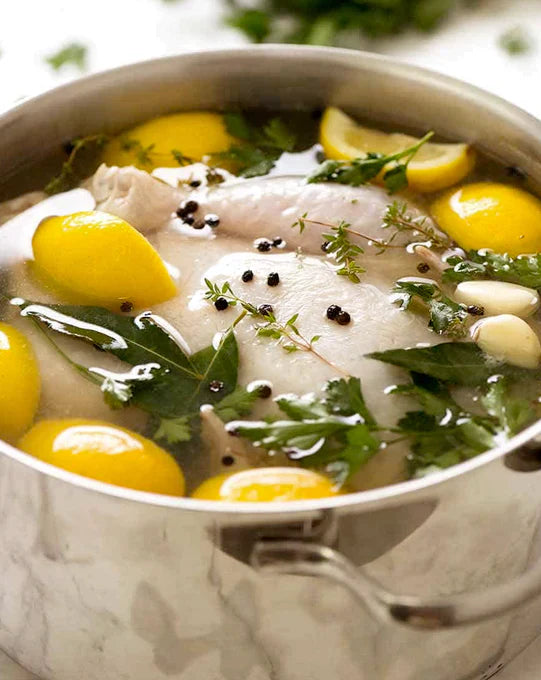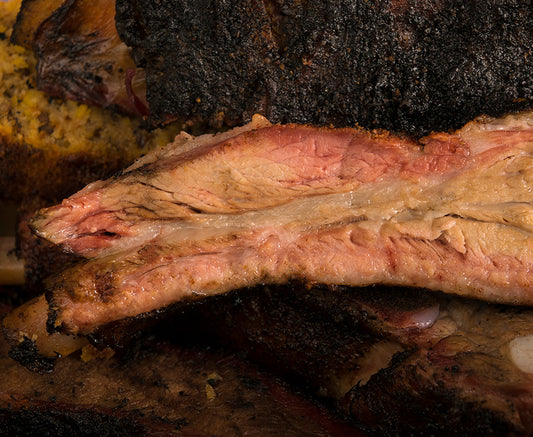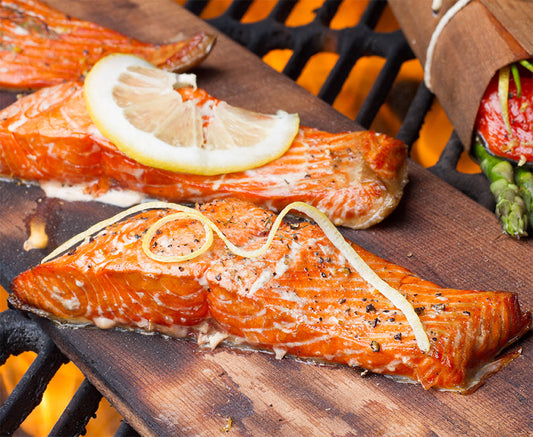Roasted turkey breast, sautéed pork chops, and stir-fried shrimp all tend to suffer a common fate when they’re cooked even a few minutes longer than necessary: they get dry and tough. Luckily, there’s a simple solution (literally) for this problem. Soaking these types of leaner meats in a brine: a solution of salt and water will help ensure moister, juicier results.
Brining enhances the juiciness of muscle fibers which simply absorb liquid during the brining period. Some of this liquid gets lost during cooking, but since the meat is in a sense juicier at the start of cooking, it ends up juicier. We can verify that brined meat and fish absorb liquid by weighing them before and after brining.
Check out our detailed article on how to brine or cure your meat for your next cookout!

How does brining affect meat?
The increased salinity of the cell fluid causes the cell to absorb water from the brine via osmosis. The salt introduced into the cell denatures its proteins. The proteins coagulate, forming a matrix that traps water molecules and holds them during cooking. This prevents the meat from dehydrating.
Brining Basics

Any lean, dry meat is an ideal candidate for brining; some of my favorites are shrimp, fish fillets, chicken pieces, whole chickens, and pork chops. Keep all meat and fish refrigerated during brining, rinse them well afterwards, and don’t overcook them. If you need more liquid to completely submerge the meat, measure more and add it, along with the proportionate quantity of salt.
You can add dried herbs, such as thyme, oregano, or sage, to the brine or rub them directly on the meat for more flavor. You can also supplement or replace the water with another liquid, such as apple cider for a turkey or pork brine. Many brines include sugar, which is fine as a flavor enhancer.
Pro Tip: Whatever you’re brining, remember to rinse the meat or fish well afterward to remove any surface salt. Properly brined meat shouldn’t taste salty, just very juicy with good flavor. But do reduce the amount of salt called for in the recipe; that is, don’t add salt until the dish is at a point where you can taste it and judge.

Flavor, Flavor, Flavor
Our purpose with brine is to infuse flavor into the meat – so choose things that have some. You can use honey in brines and another good choice for certain recipes is maple syrup. Raw cane syrup or freshly ground dates might be some other ideas to try. Even apple juice would work. Oh, one last thing to consider – too much sugar will leave noticeable sweetness in the finished meat and can lead to pork tasting like ham after cooking.
We hope you learned something about brining and now, you’re one step closer to becoming the pitmaster of your dreams! Don’t forget to check out the Bradley Smoker blog for more fantastic food smoking tips & tricks.





